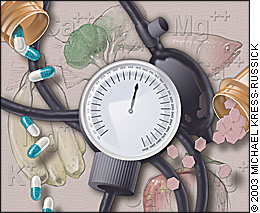
Am Fam Physician. 2003;68(5):781

It's back-to-school time already and fall is just a few weeks away. That means it's time for a fresh crop of viruses and other infections to bring patients to your office with complaints of sore throat. This year, though, you can be armed with a better way of deciding how to manage those patients. On page 938, you will find a form that you can photocopy and use during patient examinations to help you make efficient diagnostic decisions and treatment choices based on decision rules drawn from the evidence.
This patient encounter form, developed by Mark Ebell, M.D., M.S., AFP's deputy editor for evidence-based medicine, represents the first in a series of “Point-of-Care Guides” that will put evidence at the fingertips of family physicians making clinical decisions. See the accompanying article on page 937, which explains the decision rule that Dr. Ebell has incorporated into the encounter form.
The series will present concise summaries of the strongest available evidence regarding the diagnosis of common or important conditions in primary care. Each article will provide clinical questions with evidence-based answers and a brief case scenario showing how the evidence is applied in practice. Whenever possible, clinical decision rules and evidence-based algorithms will be adapted into a clinical tool that physicians can photocopy and incorporate in their practices.
These clinical guides are intended to close the distance between good medicine and good practice. In fact, the guides are so focused on helping physicians bring evidence into practice that Family Practice Management, AFP's sister journal, decided it only made sense to publish these tools in tandem. The forms will be made available online for the readers of AFP and FPM atwww.aafp.org/afp andwww.aafp.org/fpm.
Sample topics in upcoming issues include office-based protocols for the diagnosis of pulmonary embolism, deep venous thrombosis, and chest pain; risk prediction for patients with gastrointestinal bleeding and pneumonia; prognosis of patients with liver disease, breast cancer, and melanoma; and dosing of warfarin.
In addition to creating clinical guides that family physicians can add to their repertoire of evidence-based tools, Dr. Ebell has plans for several other new AFP features to help family physicians incorporate evidence-based medicine in their practices.